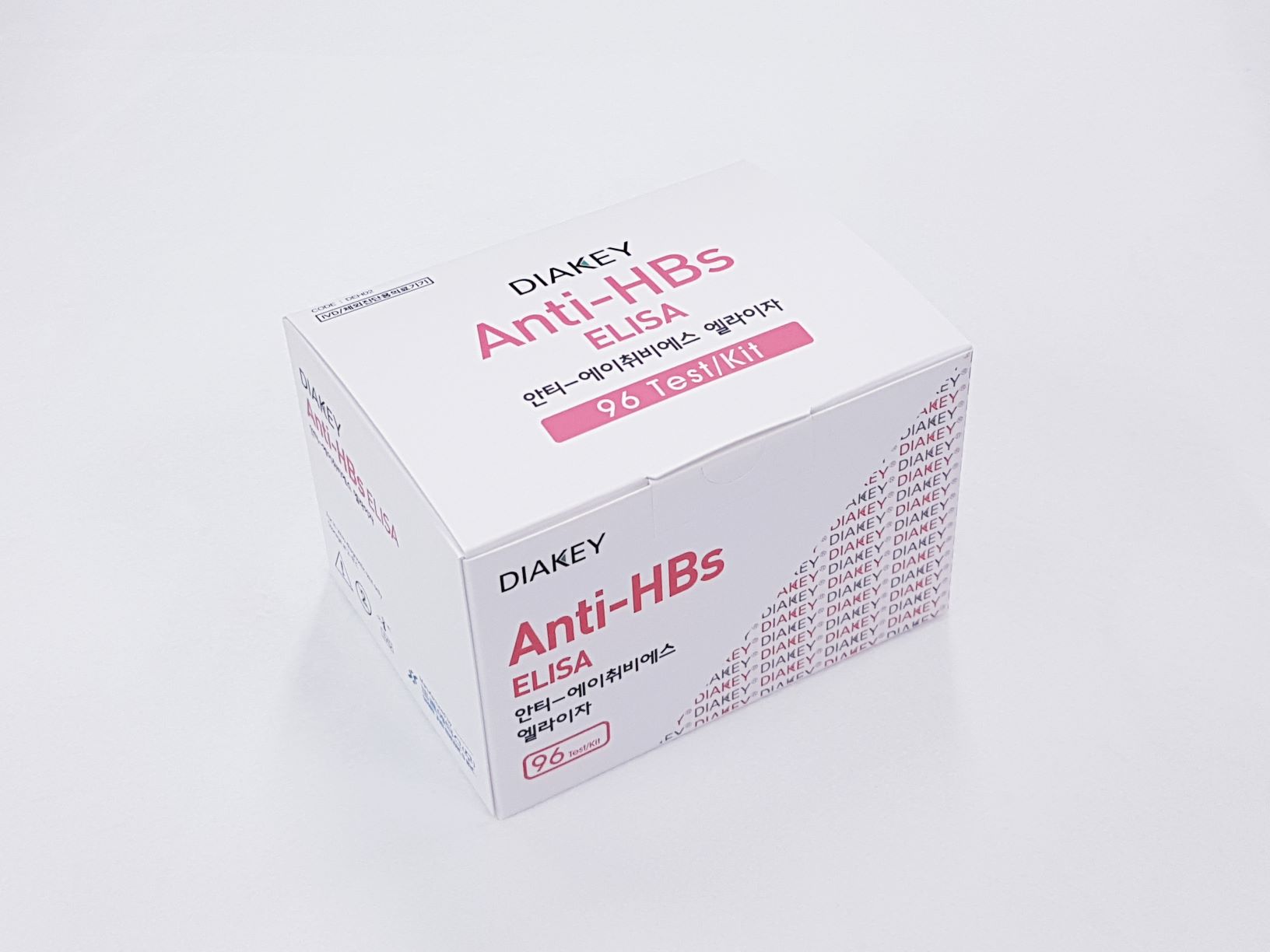Product

DIAKEY Anti-HBs ELISA
Intended Use
Enzyme-Linked Immunosorbent Assay for qualitative or quantitative determination of Hepatitis B surface Antibody (Anti-HBs) in human serum or plasma
Introduction
In 1965, Dr. Blumberg who was studying hemophilia, found an antibody in two patients which reacted against an antigen from an Australian Aborigine. Later the antigen was found in patients with serum type hepatitis and was initially designated "Australian Antigen". Subsequent study has shown the Australian Antigen to be the hepatitis B surface antigen (HBsAg, HBs Antigen). Initially there appeared to be three particles associated with hepatitis B infection: a large "complete" particle called the "Dane particle", a small circular 22 nm particle and an oblong 42 nm C particle. Further research identified the Dane particle as the hepatitis B virion and the other two particles as excess surface protein. This former terminology is no longer used and the virus is referred to according to its structure. Subsequent association with hepatitis B virus (HBV) led to the development of sensitive, specific markers of HBV infection. During acute and chronic HBV infection, HBsAg is produced in excess amounts, circulating in blood as both 22 nm spherical and tubular particles. HBsAg can be identified in serum 30~60 days after exposure to HBV and persists for variable periods depending on the resolution of the infection. Antibody to HBsAg (anti-HBs) develops after a resolved infection and is responsible for long-term immunity. Anti-HBc develops in both resolved acute infections and chronic HBV infections and persists indefinitely. Immunoglobulin M (IgM) anti-HBc appears early in infection and persists for greater than or equal to 6 months. It is a reliable marker of acute HBV infection.
** Modes of Transmission: Transmission of HBV occurs via percutaneous or permucosal routes, and infective blood or body fluids can be introduced at birth, through sexual contact or by contaminated needles. Infection can also occur in settings of continuous close personal contact (such as in households or among persons in institutions for the developmentally disables), presumably via inapparent or unnoticed contact of infective secretions with skin lesions or mucosal surfaces.
Principle of the Assay
Testing for antibodies against Hepatitis B surface antigen (Anti-HBs), the last marker to appear in seroconversion, is an important tool in evaluating recovery from Hepatitis B Virus infection and also for screening of populations undergoing immunization programs. Generally Anti-HBs appears in serum at the end of the "window" period, following HBsAg clearance, after which they may persist for years or for a lifetime. A lack of seroconversion into Anti-HBs indicates that the patient is evolving into chronic hepatitis (5% of infection cases).
Handling Precaution
- Do not use mixed reagents from different lots.
- Do not use reagents beyond the expiration date.
- Use distilled water stored in clean container.
- Use an individual disposable tip for each sample and reagent, to prevent the possible cross-contamination among the samples.
- Rapidly dispense reagents during the assay, not to let wells dry out.
Use Precaution
- Wear disposable globes while handling the kit reagents and wash hands thoroughly afterwards.
- Do not pipette by mouth.
- Do not smoke, eat or drink in areas where specimens or kit reagents are handle.
- Handle samples, reagents and loboratory equipments used for assy with extreme care, as they may potentially contain infectious agents.
- When samples or reagents happen to be spilt, wash carefully with a 1% sodium hypochlorite solution.
- Dispose of this cleaning liquid and also such used washing cloth or tissue paper with care, as they may also contain infectious agents.
- Avoid microbial contamination when the reagent vial be eventually opend or the contents be handled.
- Use only for IN VITRO.

